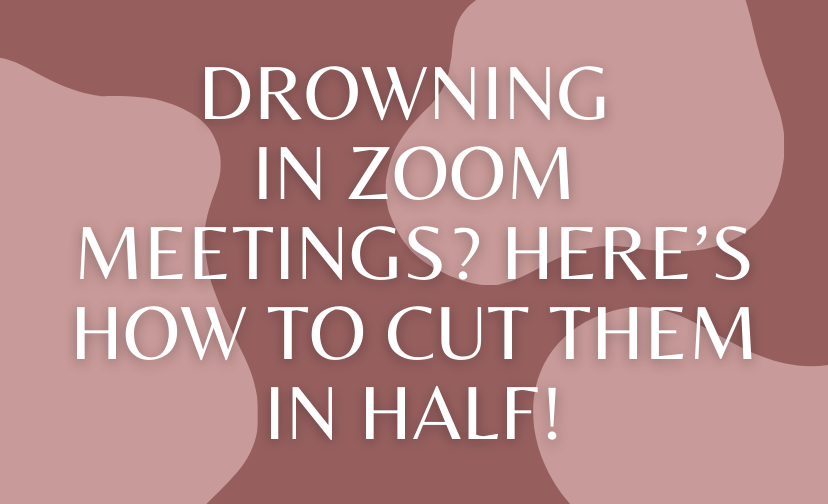Have you ever found yourself trapped in a seemingly endless cycle of Zoom meetings, feeling like you’re swimming against a tide of digital fatigue? You’re not alone. Many professionals are grappling with the reality of back-to-back virtual gatherings, which can drain energy and stifle productivity.
This blog post will delve into effective strategies to reduce Zoom meetings and help you reclaim your time and sanity. By exploring the causes of Zoom fatigue and offering practical solutions, we aim to empower you with the tools needed to foster a more balanced and productive work life.
Understanding Zoom Fatigue
Zoom fatigue is a modern-day ailment that has emerged alongside the rise of remote work. The mental exhaustion comes from prolonged video conferencing, where the lines between professional and personal spaces blur. Understanding its root causes is essential in addressing this pervasive issue.
What Causes Zoom Fatigue?
The culprits behind Zoom fatigue are multifaceted. Firstly, there’s the cognitive overload from constantly processing non-verbal cues over a screen, a task our brains aren’t wired for.
Additionally, the lack of physical movement during meetings can exacerbate feelings of sluggishness and weariness. Moreover, the pressure to always appear engaged and attentive on camera adds another layer of stress, akin to performing on a stage without a break.
Imagine trying to catch a butterfly with a net that has too many holes—it’s an exercise in futility, much like attempting to maintain focus in a day filled with virtual meetings. This relentless cycle can lead to burnout, affecting both mental well-being and work performance.

The Impact of Excessive Meetings on Productivity
Excessive meetings are notorious for disrupting the flow of work, turning what should be productive hours into fragmented, unproductive intervals.
Constant interruptions diminish the ability to engage in deep work, leading to a decrease in overall efficiency. The frequent switch between tasks, context switching, can also significantly hamper cognitive functioning. Moreover, too many meetings can dilute decision-making processes, as the time spent discussing can overshadow the time needed for actual implementation.
It’s like trying to cook a meal with too many chefs in the kitchen, each with different ideas but no consensus on the recipe. Ultimately, this impacts individual productivity and the team’s overall output.
To combat the impact of excessive meetings, try setting specific “focus times” during your day where meetings are off-limits. This will allow you to concentrate on deep work without interruptions. Communicate these blocks clearly to your team to ensure everyone respects your need for uninterrupted work periods.
The Importance of Reducing Zoom Meetings
Reducing Zoom meetings is not merely about cutting screen time; it’s about fostering a healthier, more efficient work environment. By strategically decreasing unnecessary meetings, you open up avenues for enhanced creativity and collaboration.
Benefits of Cutting Back on Meetings
When Zoom meetings are reduced, more time is allowed for focused work, improving productivity and job satisfaction. This reduction also minimizes stress levels, as employees feel less overwhelmed by the constant demand for attention. Furthermore, it encourages more meaningful interactions as meetings become purposeful rather than perfunctory.
Imagine your workday as a garden—fewer weeds (unnecessary meetings) mean more room for flowers (productive tasks) to bloom. This balance benefits individuals and enhances team dynamics, leading to more cohesive and effective outcomes.

How to Identify Unnecessary Meetings
Identifying unnecessary meetings requires a keen eye and honest assessment. Begin by evaluating each meeting’s purpose and outcome.
Ask yourself if the goals could be achieved through other means, such as emails or shared documents. Additionally, consider whether all attendees are essential or if the meeting could be streamlined with fewer participants.
Create a checklist to determine the necessity of a meeting:
- Is there a clear agenda?
- Can the objectives be met without a meeting?
- Are the right people involved?
- Will it add value to the team?
Consider implementing a “meeting audit” every quarter to assess the effectiveness and necessity of recurring meetings. This process can help identify patterns of inefficiency and provide opportunities to optimize your meeting schedule.
Time Management Strategies to Reduce Zoom Meetings
Effective time management is key to reducing Zoom meetings. By implementing strategic approaches, you can create a more manageable schedule, prioritizing essential tasks over unnecessary video calls.
Implementing Meeting-Free Days
Meeting-free days are a powerful strategy for regaining control over your schedule. Designate specific days without meetings, allowing for uninterrupted work and increased focus. This practice boosts productivity and provides mental relief from the constant demands of videoconferencing.
Think of meeting-free days as fresh air in a stuffy room, offering clarity and renewed energy. To implement this effectively, communicate the plan to your team and encourage them to follow suit, creating a collective culture of respect for these dedicated focus days.

Setting Clear Meeting Objectives
Clear objectives are the cornerstone of effective meetings. Before scheduling a meeting, define its purpose and desired outcomes.
Share this information with all participants to ensure everyone is aligned and prepared. This approach reduces the likelihood of veering off-topic and keeps discussions concise and productive.
Consider each meeting as a journey with a specific destination. Without a map (clear objectives), you risk wandering aimlessly, wasting valuable time. By setting clear goals, you pave the way for efficient and meaningful interactions.
Utilizing Asynchronous Communication
Asynchronous communication is an invaluable tool for reducing Zoom meetings. By leveraging platforms like Slack or Microsoft Teams, you can share information and collaborate without real-time interaction.
This approach allows team members to respond at their own pace, promoting flexibility and reducing the pressure of immediate replies.
It’s akin to writing letters instead of making phone calls—messages can be crafted thoughtfully, and responses can be considered without the urgency of instant communication. Embracing asynchronous methods can lead to more thoughtful contributions and a more relaxed work atmosphere.
Encourage your team to use asynchronous tools for routine updates or brainstorming sessions. This not only reduces the number of meetings but also fosters a more inclusive environment where everyone has the opportunity to contribute at their own pace.

Productivity Tips for a Balanced Schedule
Creating a balanced schedule requires intentional planning and adopting productivity tips that streamline your workflow. By focusing on efficiency, you can maximize your workday without sacrificing quality.
Creating Effective Agendas
An effective agenda is a blueprint for a successful meeting. It outlines key discussion points, allocates time for each topic, and sets clear participant expectations. Sharing the agenda beforehand ensures that everyone is prepared and can contribute meaningfully to the conversation.
Think of an agenda as the conductor of an orchestra, guiding the flow of the meeting and ensuring harmony among participants. Adhering to a well-crafted agenda can prevent meetings from derailing and keep discussions on track.
Encouraging Shorter Meetings
Shorter meetings can be just as effective, if not more so, than lengthy ones. Setting a time limit encourages participants to stay focused and concise. This approach saves time and keeps energy levels high, preventing the dreaded mid-meeting slump.
Consider the difference between a sprint and a marathon—both have their place, but a sprint requires intense focus and delivers quick results. You can achieve your objectives efficiently and with renewed vigor by aiming for shorter meetings.

Leveraging Technology to Streamline Communication
Technology offers many tools to streamline communication and reduce the need for constant meetings. Platforms like Trello or Asana can help manage projects and tasks, keeping everyone informed without frequent check-ins. These tools promote transparency and accountability, enhancing team collaboration.
Imagine technology as a bridge connecting team members across distances, allowing seamless communication without continuous video calls. You can foster a more connected and efficient work environment by embracing these tools.
| Tool | Purpose | Benefit |
|---|---|---|
| Slack | Messaging | Facilitates quick communication and reduces email overload |
| Asana | Project Management | Organizes tasks and projects, enhancing team coordination |
| Trello | Task Tracking | Visualizes project progress, improving transparency |
Real-Life Success Stories
Learning from real-life success stories can provide valuable insights and inspiration for those looking to reduce their Zoom meeting load. These examples highlight the benefits of adopting meeting-free practices and time management strategies.
How Others Have Cut Their Meeting Times
Many companies have successfully reduced their meeting times by implementing strategic changes. For instance, a tech startup enforced a strict 30-minute limit on all meetings, resulting in more focused discussions and increased productivity. Another organization introduced “No-Meeting Wednesdays,” allowing employees to dedicate the entire day to deep work and personal projects.
These success stories demonstrate that with the right strategies, you can regain control over your schedule and reduce the burden of excessive meetings. By embracing these practices, you can foster a more productive and satisfying work environment.

Lessons Learned from Meeting-Free Practices
Adopting meeting-free practices has taught organizations valuable lessons about efficiency and collaboration. For example, some companies have discovered that not all meetings require video, opting for voice-only calls to reduce screen fatigue. Others have found that rotating meeting facilitators can provide fresh perspectives and engage in discussions.
These lessons underscore the importance of flexibility and adaptability in meeting management. By continuously evaluating and refining your approach, you can create a more dynamic and effective meeting culture that supports both individual and team success.
Your Path to a Meeting-Free Life
Embarking on the journey to a meeting-free life requires commitment and a willingness to challenge the status quo. By taking proactive steps, you can transform your work environment and achieve a more balanced and fulfilling professional life.
Taking Control of Your Schedule
Taking control of your schedule involves setting boundaries and prioritizing tasks. Start by identifying your most productive hours and reserving them for deep work. Communicate your availability clearly to colleagues and encourage them to do the same, fostering a culture of mutual respect for each other’s time.
Think of your schedule as a canvas—you can create a masterpiece of productivity and fulfillment by painting with intention. By taking charge of your time, you can reduce the stress of constant meetings and focus on what truly matters.

Encouraging a Culture of Meeting Reduction
Creating a culture of meeting reduction starts with leadership. Encourage open discussions about the necessity of meetings and empower team members to suggest alternatives. Recognize and reward efforts to streamline communication, reinforcing the value of efficiency and collaboration.
Imagine your workplace as a symphony, where each instrument plays a crucial role in creating harmony. By promoting a culture of meeting reduction, you can ensure that every note contributes to the organization’s overall success.
Lead by example by regularly assessing the necessity of your own meetings and openly discussing the outcomes with your team. This transparency encourages others to evaluate their own meeting habits and fosters a collaborative effort towards a more efficient work culture.





